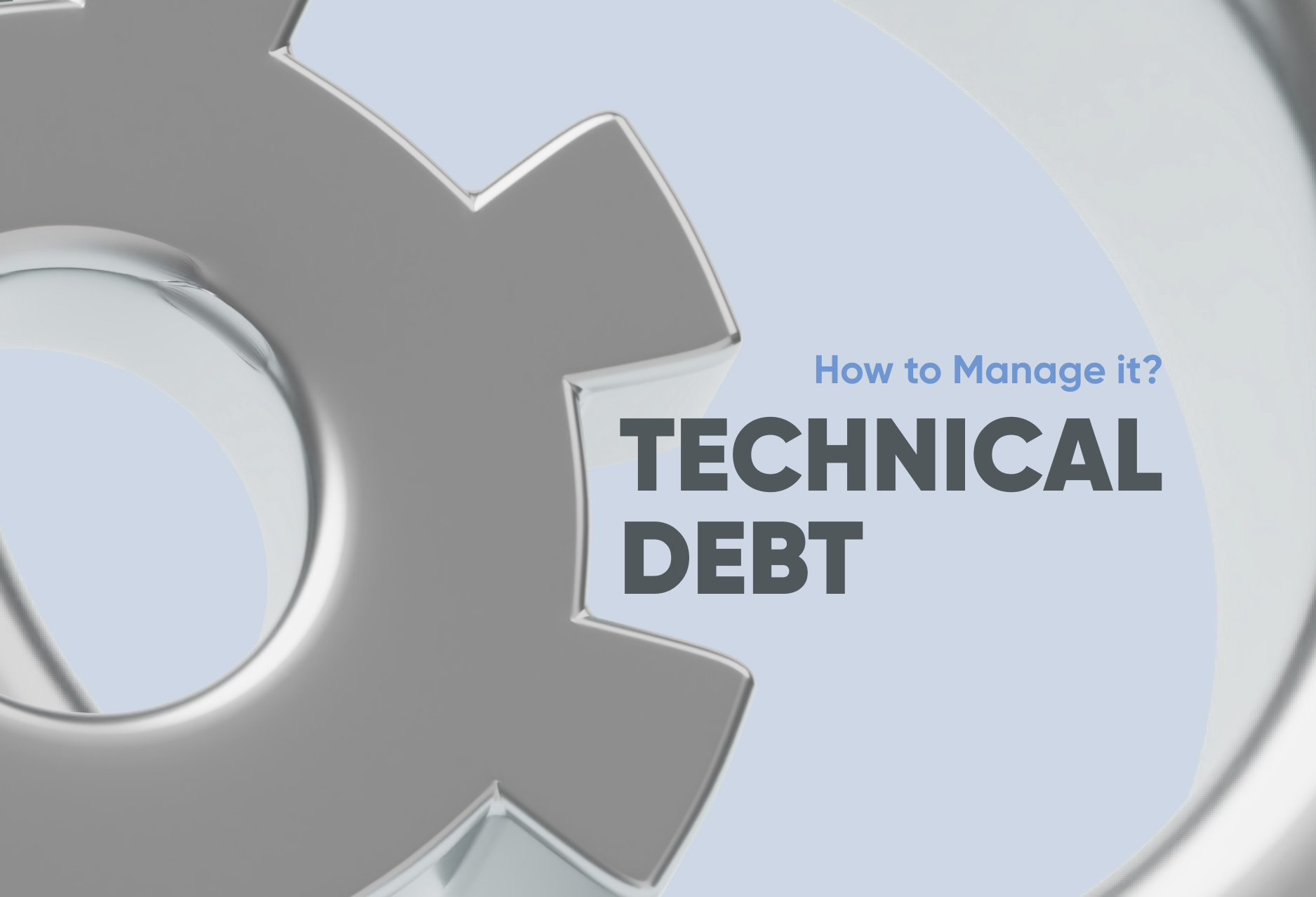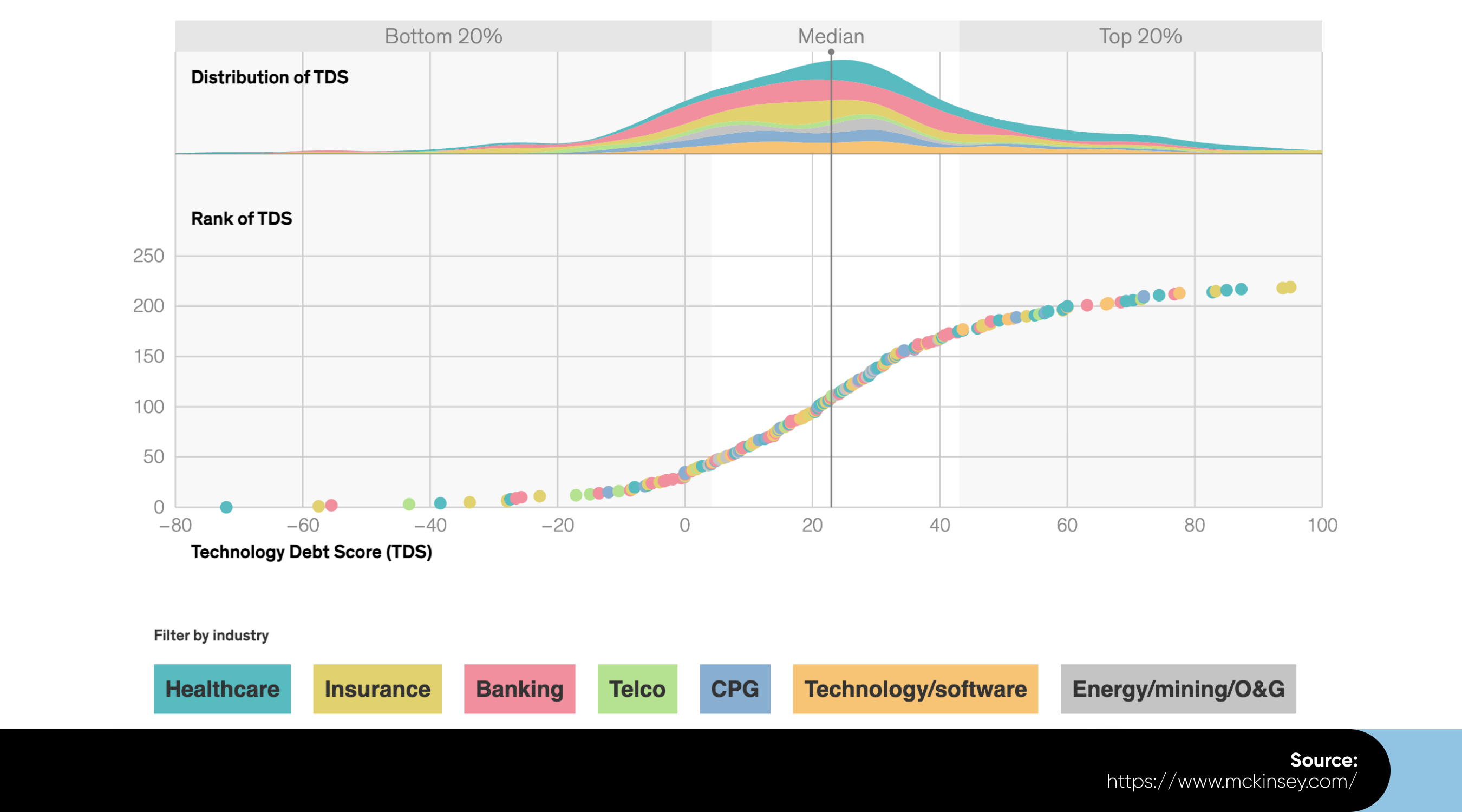Monitoring Performance Metrics
By keeping a close eye on code metrics like load times, memory usage, and response times, you can spot inefficiencies that point to deeper issues in your code metrics. If you notice slow performance, it’s likely that tech debt is already in the background, whether it’s inefficient algorithms or unoptimized queries slowing things down.
Gathering Team Feedback
Software developers feel the potential impact of tech debt first. Regularly checking in with your team can give you valuable insights into which parts of the codebase are becoming a headache to maintain.
Ways to Manage and Reduce Technical Debt
Finally, how to reduce technical debt? Here are some of the proven strategies for tech debt management.
Prioritize Debt Repayment
Think of this like paying off a credit card. You can’t clear all the debt at once, but you can chip away at the most critical parts first. Prioritize the areas of your code that are causing the most pain or have the highest risk of causing code debt.
Regular Refactoring
Set aside regular time to tidy up, optimize, and improve your code quality. It might not be as exciting as building new features, but it keeps your code healthy and manageable having a good impact on performance.
Implement Coding Standards
Having consistent coding standards helps to reduce the chances of accumulating new technical debt and makes your code easier to maintain.
Automated Testing
Automated testing catches performance issues early and ensures that changes don’t introduce new bugs. It might take time to set up, but in the long run, it saves you from headaches and keeps technical debt in check.
Comprehensive Documentation
Clear, up-to-date documentation makes it easier to onboard new developers and reduces the chances of misunderstandings that lead to technical debt.
Regular Code Reviews
Code reviews catch potential issues early, ensure that coding process standards are followed, and foster a culture of continuous improvement.
Adopt Agile Methodologies
Agile practices, with their focus on iterative development and regular feedback, help manage technical debt by ensuring that debt is identified and addressed quickly.
Technical Debt Tracking Tools
Use tools to track technical debt just like you would track bugs or features. These tools give you visibility into where the debt is accumulating and help you improve the software quality.
Allocate Time for Debt Reduction
Make debt reduction part of your regular workflow. Set aside dedicated time in your development cycles to tackle technical debt, just like you would for feature development or bug fixes.
Educate and Train the Team
Knowledge is power. Educate your team about the causes and consequences of technical debt, and train them in best practices to prevent it. When everyone’s on the same page, you’re less likely to accumulate debt in the first place.
Monitor and Measure Technical Debt
Finally, keep an eye on your technical debt levels. Regularly assess the state of your codebase, measure the impact of debt, and adjust your strategy as needed. It’s all about staying proactive and preventing debt from spiraling out of control.
By using these strategies, you can improve tech debt management, keeping your codebase in good shape and ensuring that it doesn’t slow you down in the long run.
Examples of Technical Debt
Let’s illustrate the concept of tech debt in a textbook case - the Y2K problem, also known as the millennium bug.
Back in the early days of computing, memory, and storage were incredibly limited and expensive. To save space, programmers often used two digits to represent the year in dates (98 for 1998 instead of four.
This seemed like a practical shortcut at the development time, but as the year 2000 approached, it became clear that such business decisions were a ticking time bomb. When the clocks rolled over to "00," computers might interpret it as 1900 instead of 2000, potentially causing errors in calculations, data sorting, and system operations.
Organizations worldwide had to spend billions of dollars and countless hours fixing the issue before the year 2000 hit. This involved updating code, replacing old systems, and rigorously testing everything to ensure that the Y2K bug wouldn’t cause disruptions.
Technical debt can occur in many different ways, but here are the most widespread examples:
# Quick Fixes
Imagine you’re under pressure to meet a deadline, so you implement a quick solution rather than a proper solution. This could be a hacky piece of code that works for now but isn’t scalable or maintainable. It might be one of the temporary solutions (like Y2K), but down the road, it could lead to bugs, bad code, poor user experiences, security breaches, and compatibility issues.
# Outdated Technology
Let’s say your project started a few years ago, and it’s built on an older framework that’s no longer supported. Migrating to a newer, more efficient technology would take time, so you keep patching the old one. Over time, this outdated technology becomes a form of technical debt, as it slows down development and makes it harder to integrate modern tools or practices without technical debt management.
# Lack of Testing
To get a feature out quickly, companies often feel tempted to skip writing automated tests. This saves time in the short term, but it can lead to reducing technical debt later because future changes to the code might introduce bugs that go unnoticed. Insufficient testing makes it harder to ensure the code’s stability as the project grows which inevitably leads to performance issues.
# Poor Documentation or Lack of Documentation
If the codebase isn’t well-documented, it creates technical debt. New developers joining the software development teams, or even existing ones, will struggle to understand how the code works, making it harder to maintain or enhance. This can lead to mistakes or slow down development.
# Inconsistent Coding Standards
Different developers can use different styles or approaches to writing code without following a unified standard, the codebase can become messy and hard to manage. This inconsistency creates the need for technical debt management because it makes the code harder to read, debug, and maintain.
# Deferred Refactoring
You know there’s an area of the code that’s a bit of a mess, but it’s working for now, so you put off cleaning it up. Over time, as more features are built on top of that messy code, the debt increases, and what could have been a simple refactor becomes a major project.
Reduce Technical Debt with inVerita
If you reduce technical debt systematically, it’s not necessarily a bad thing, it’s just part of the balancing act in software development so you can get things done fast. But if you ignore it for too long, it can really drag your project down and increase long-term costs.
There are many different ways how to manage technical debt the truth is that managing technical debt must become a part of a company’s culture to solve the existing problems while moving your product forward.








_1764586939-small.webp)
